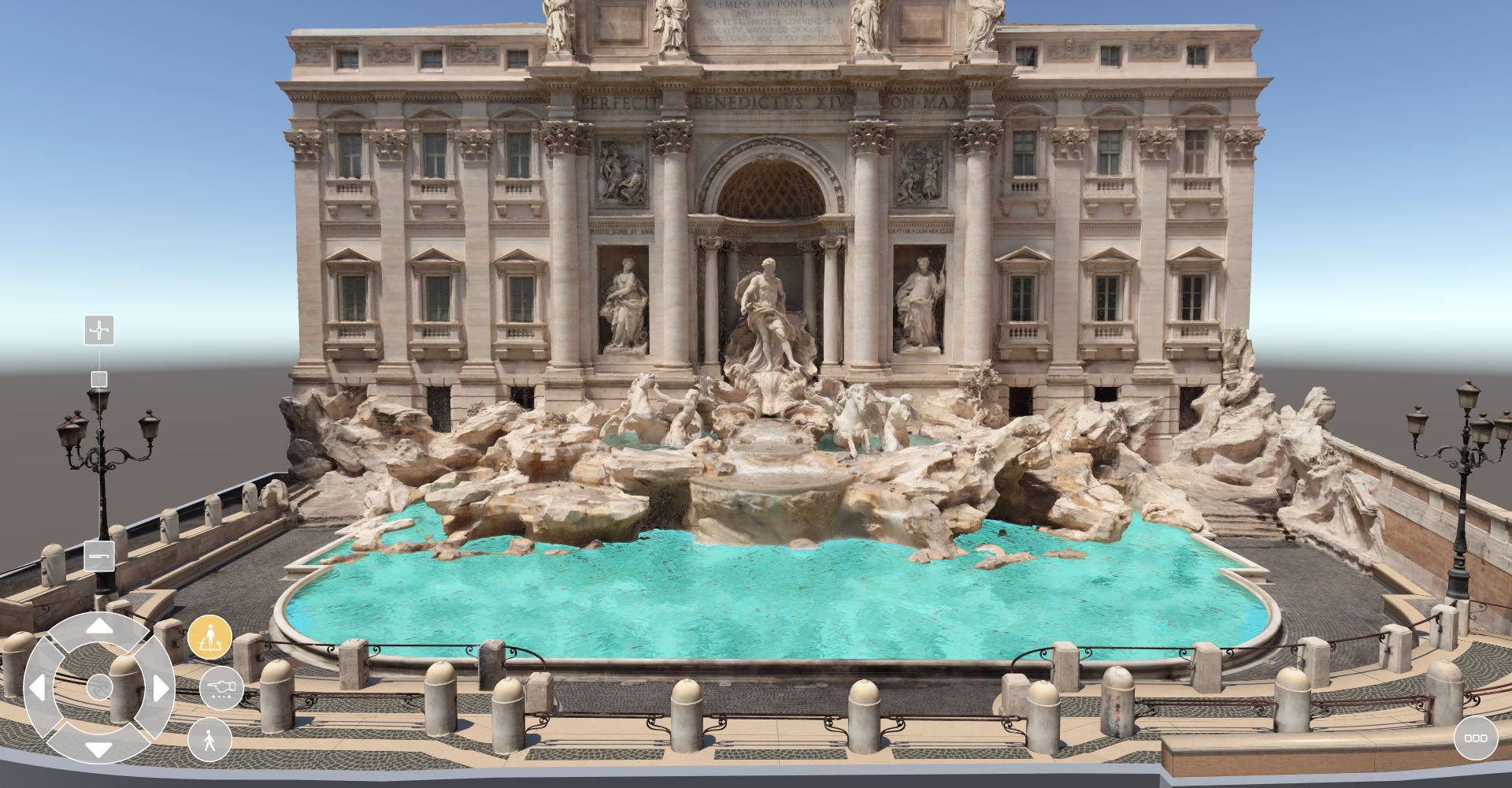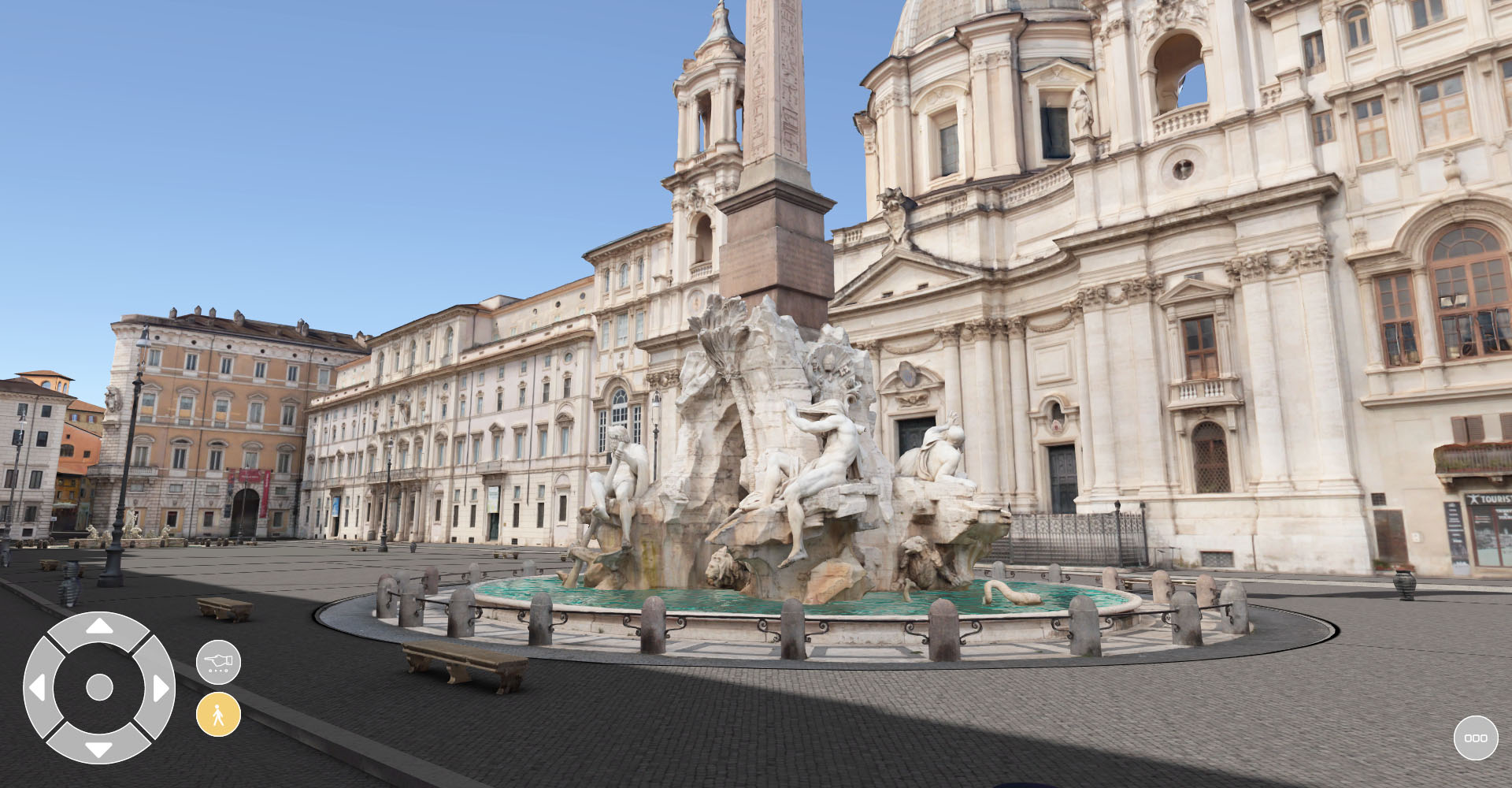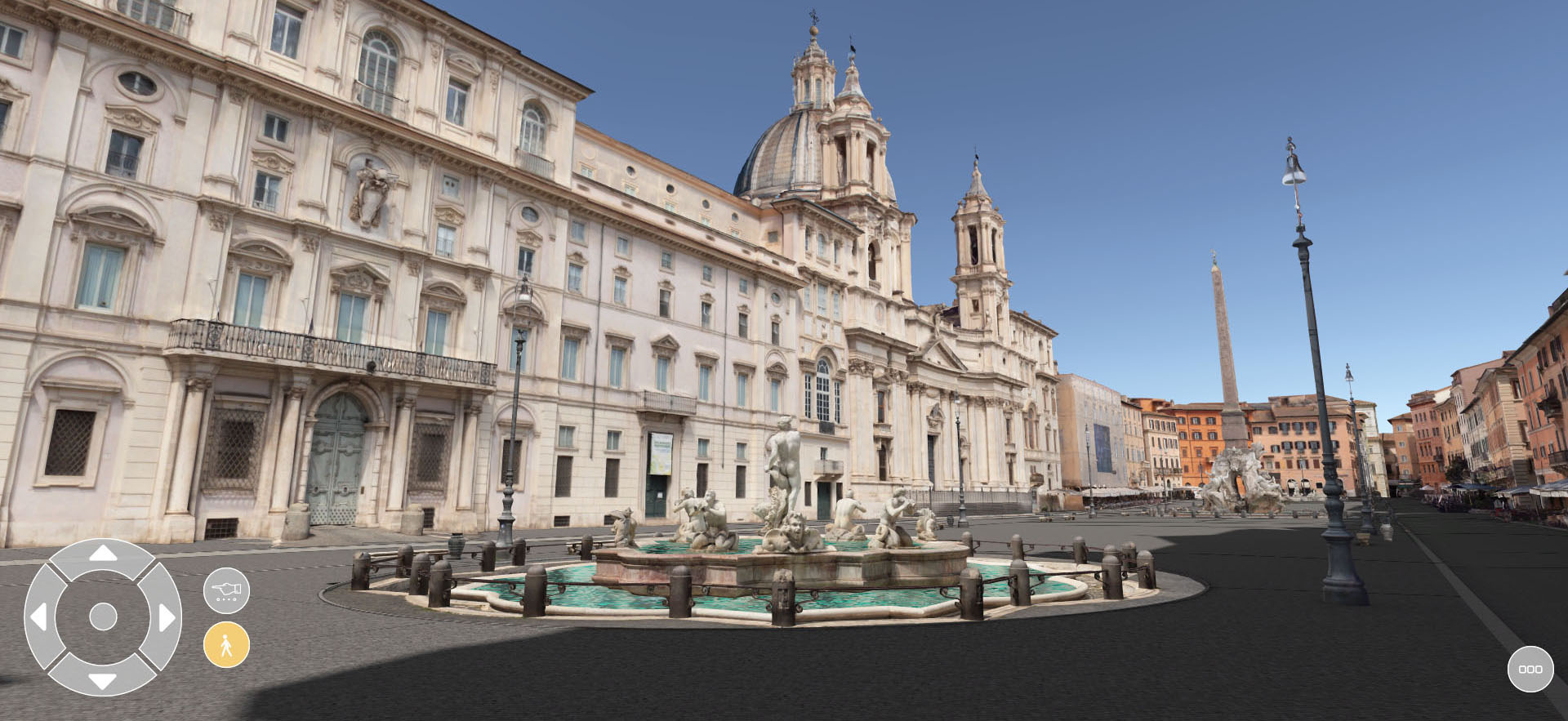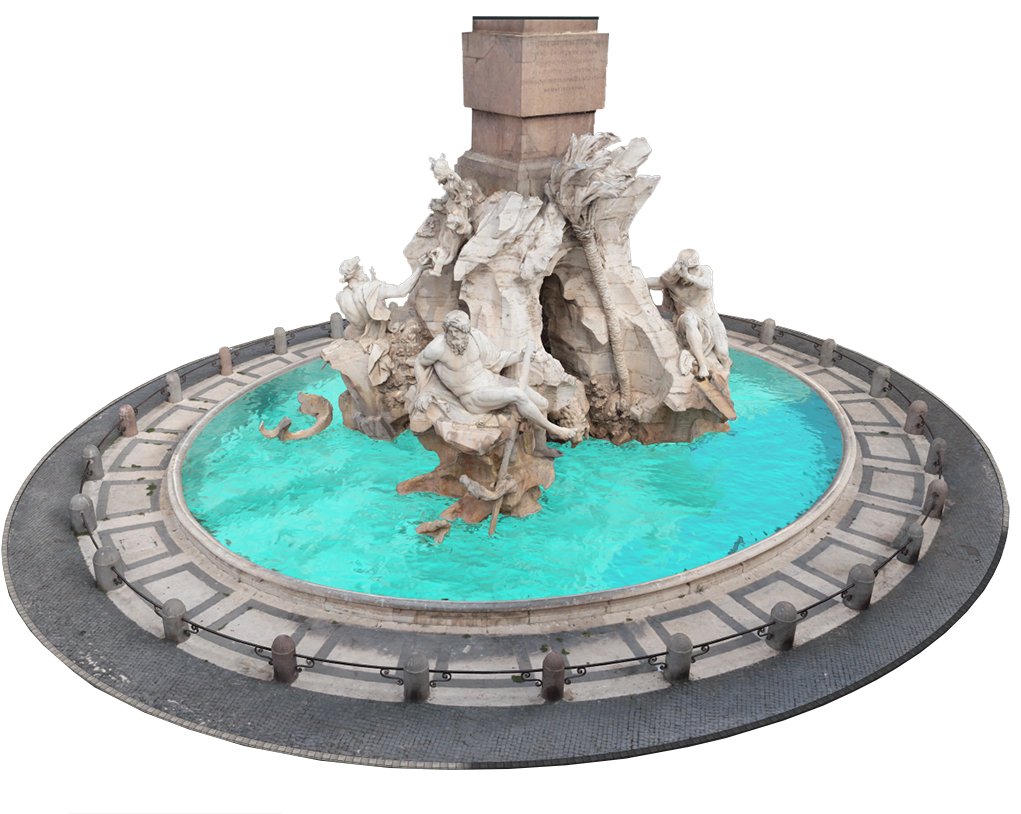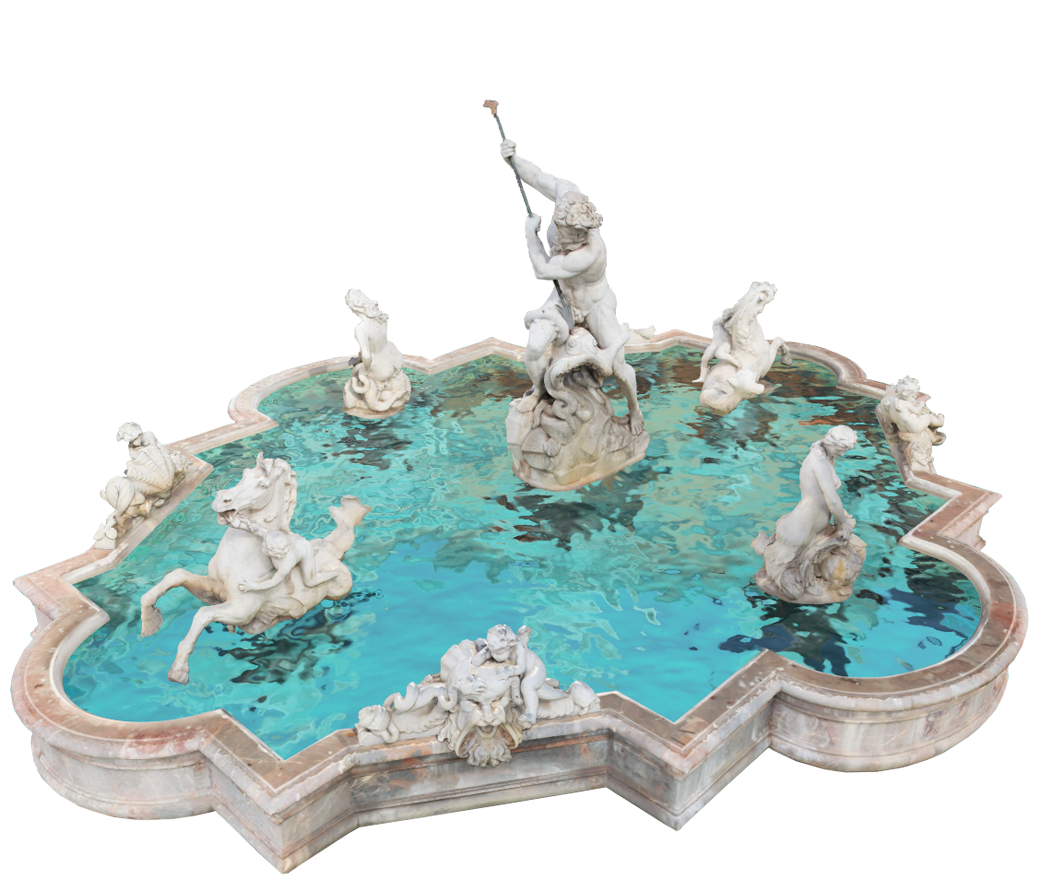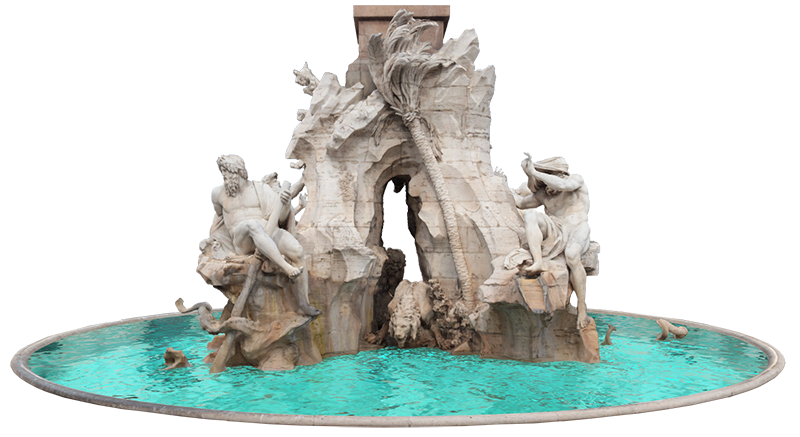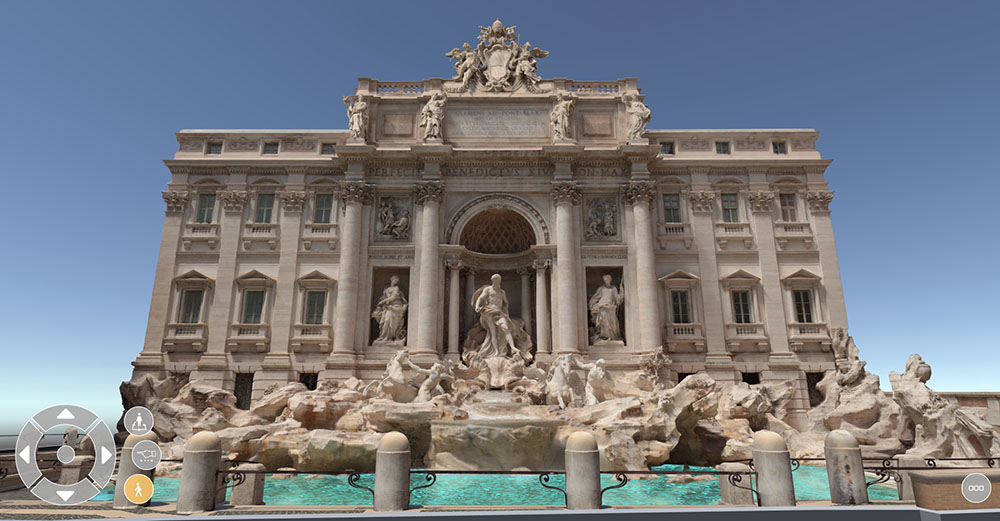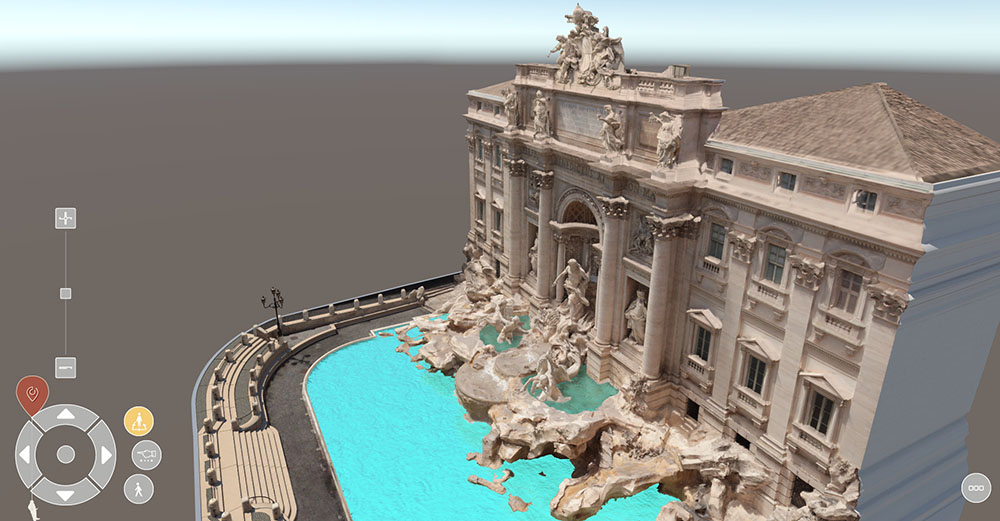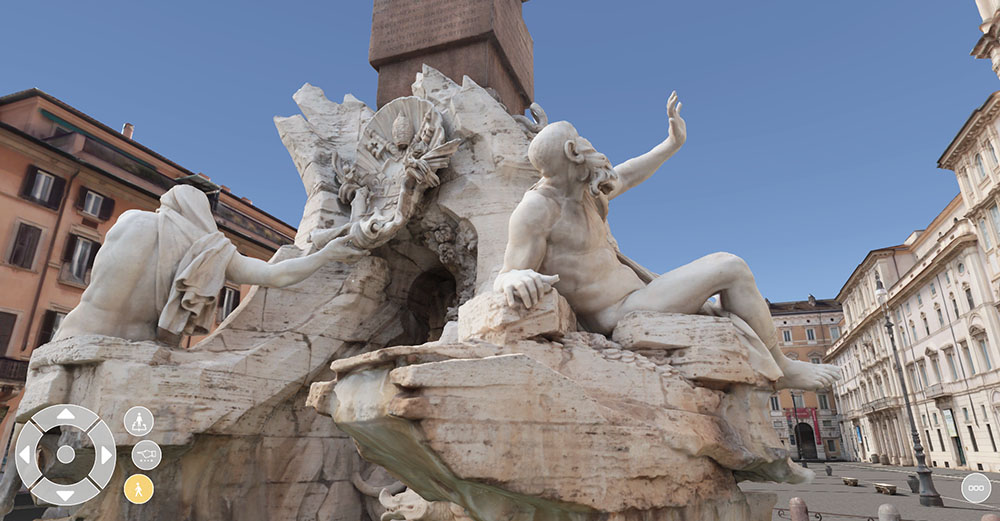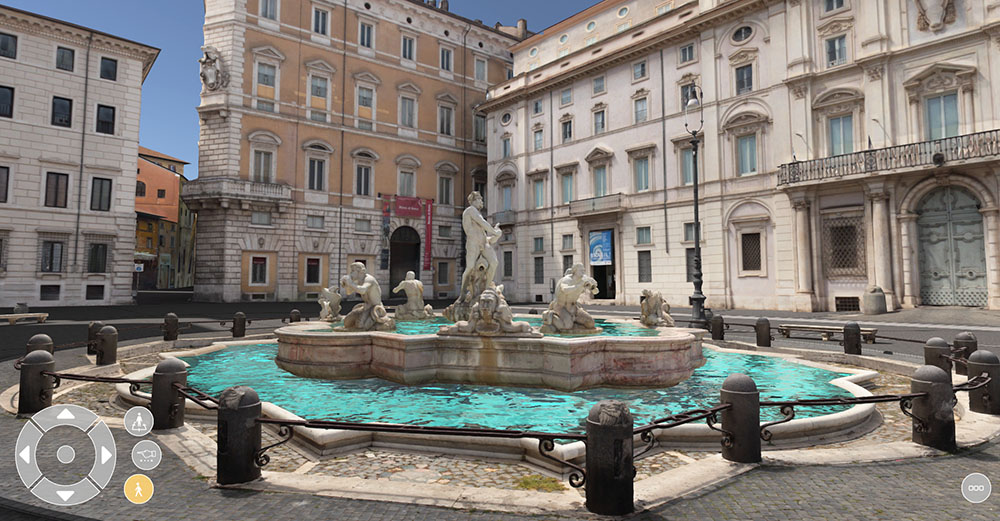The story of 4D project
Rome Fountains 4D
Rome's historical downtown and Rome Fountains are one of most attractive culture "diamond" in the world. During the pandemic time we have decision create new innovative 4D project specially for delivering of this heritage to anyone to any point at our Planet. Navigator4D company since summer 2021 and during 2 years has performed a huge amount of 3D scanning of the building, fountains, architecture and sculptures in Rome downtown especially for realisation of this unique. Finally, Navigator4D have created this amazing project for public access to Rome heritage in new "Virtual Visit 4D" format. This product is an exact virtual 3D reconstruction of 5 unique fountains of Rome: Trevi fountain, Tritone fountain, 3 fountains on the piazza Navona - 4 Rivers fountain, Neptune fountain and Moor fountain. These 5 fountains of Rome and even Navona square were scanned in 3D in high details and presented in this new innovative product in photorealistic quality with their detailed descriptions and voice guide in 4 languages: English, Italian, French and Russian. All sculptures and 3D objects, bas-reliefs and buildings have been scanned in 3D and displayed in high quality with their detailed descriptions. You can move freely around 5 famous fountains and Navona square and, moreover, you can take your virtual 3D guided tour in manual or automatic mode. An interactive catalogue of 3D objects and photographs of fountains and Piazza Navona has been created in the project. Organized internal division by themes and locations - location in Rome. Organized search system for names and all contents of the interactive catalogue in the project.
